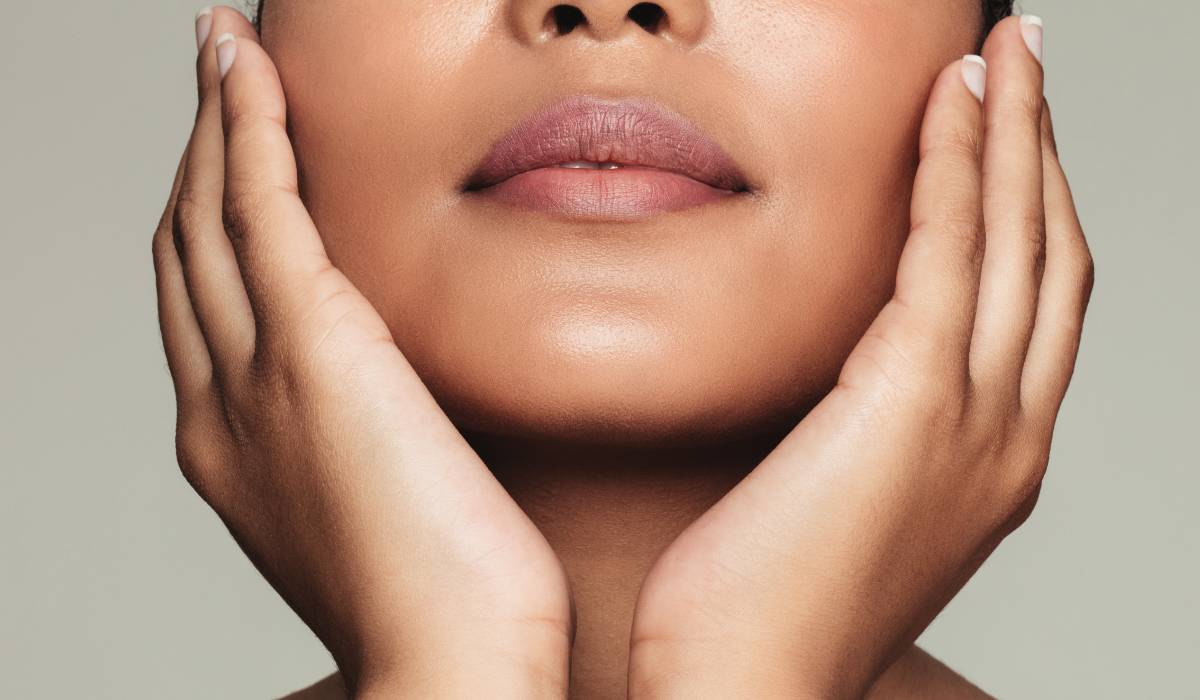Get BRIGHTER skin with vitamin E for face (it works!)
Ever look in the mirror and feel like your skin’s just… off?
Meaning, that dull, grey-ish tone.
(Dry bits that catch the light in all the wrong ways. A tired look that clings on, no matter how much sleep you’ve had… that sort of thing, I have the feeling you know what I’m talking about).
I know that feeling. Dull, tired skin. But sometimes, what your skin really needs isn’t another high-tech serum or a 12-step routine (who does those anymore, seriously).
It needs something simple, proven, and nourishing.
Enter vitamin E. I’ve writtten A LOT on it, and for good reasons.
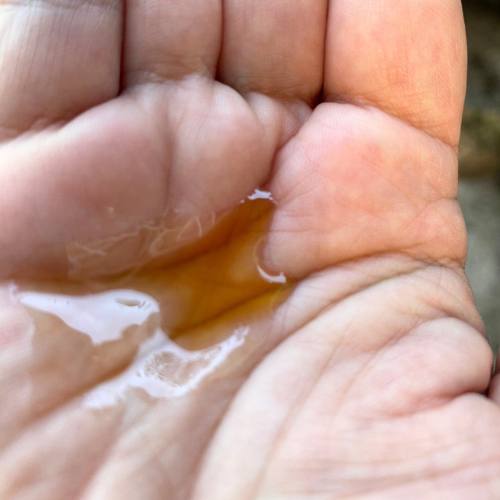
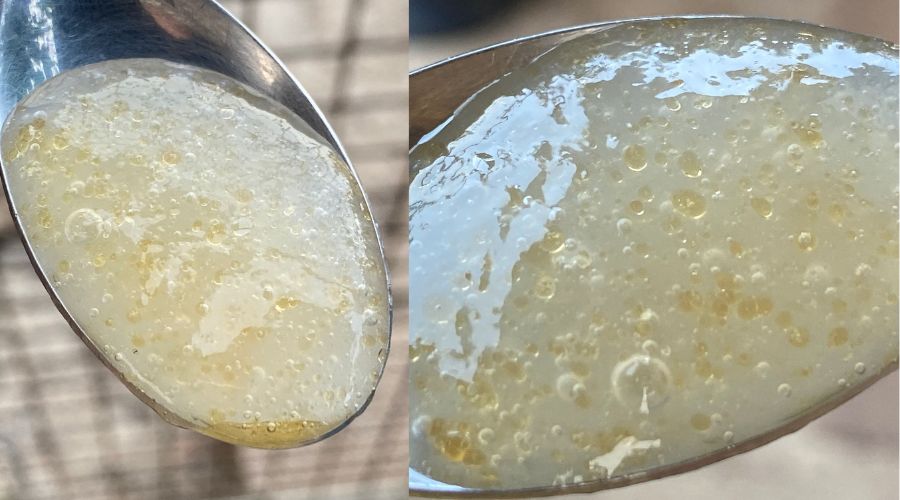
This vitamin is one of the most trusted natural skin care ingredients out there. Easy to find. Beautifully effective when used properly. And yes — it can help brighten your face naturally, gently, and without any drama.
Here’s why and how: Vitamin E is a fat-soluble antioxidant — which just means it mixes with oils and helps stop damage to your skin. That damage comes from things like sunlight, pollution, or stress — they create tiny particles that build up and start causing trouble. These particles can irritate your skin, make it feel rough or sensitive, and slowly wear down the outer layer that keeps your skin strong and smooth.
Vitamin E steps in and calms that down. It helps keep your skin working normally, so it can grow fresh, healthy cells without all that stress around.
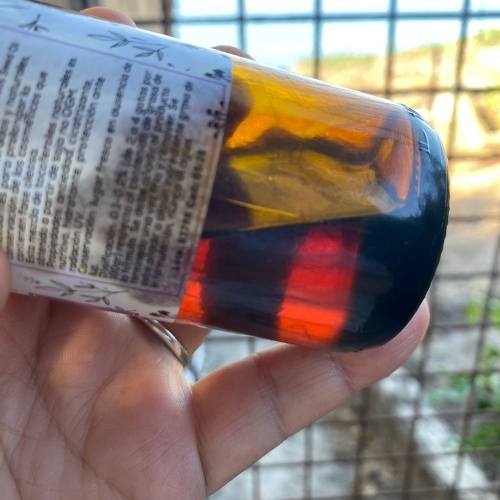
And because it’s a thick oil, it sinks into the top layer of your skin, fills in tiny cracks, and creates a seal that keeps moisture in. That’s why dry, tired-looking skin starts to look smoother and more alive again.
Hope that made things clear for you.
In this article, I’ll show you:
- What vitamin E actually is (no fluff, read above)
- Why it deserves a spot in your skincare routine
- Exactly how to use it — no guesswork
- What kind of results you can expect (and how soon)
- Simple ways to get started today
Ready to make your skin feel more like you again?
DISCLAIMER: Below you will find affiliate links. If you purchase through this links I might earn a commission at NO extra cost to you.
What is vitamin E?
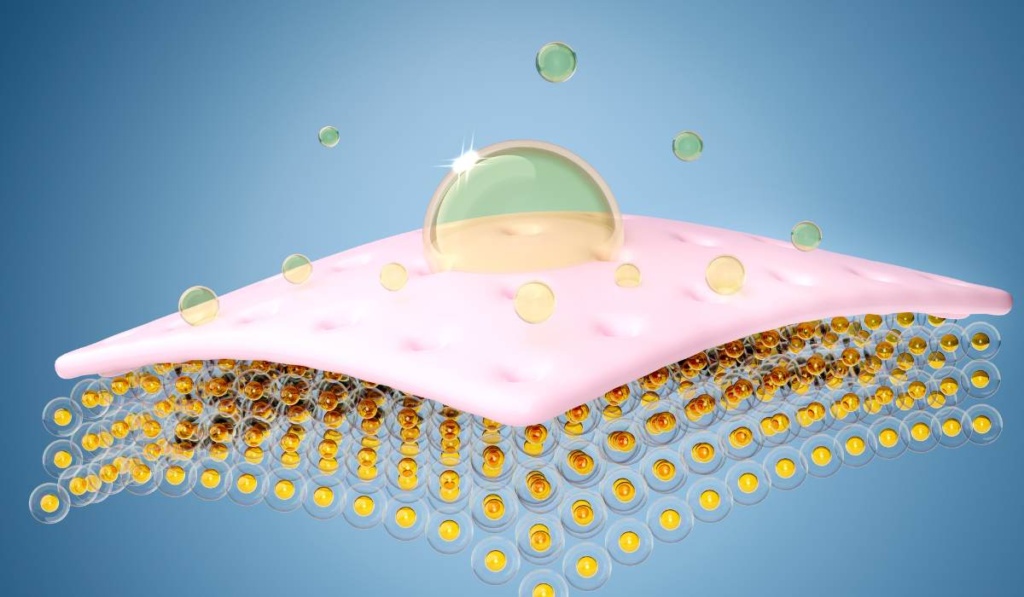
You’ve seen it on labels. You’ve heard it’s “good for your skin.” But what exactly is vitamin E — and why does it matter?
Put simply, vitamin E is an antioxidant. That means it helps protect your skin from damage caused by things like UV rays, pollution, and even stress. Think of it as a kind of shield — one that helps your skin stay strong, smooth, and less reactive.
It’s also fat-soluble, which means it blends beautifully with oils and sinks into the skin rather than sitting on top. This makes it particularly good at helping your skin stay moisturised and protected.
In skincare, you’ll often see two main forms:
- Tocopherol – the natural form, often extracted from plants like sunflower or wheatgerm oil. It’s the one many people prefer in natural products.
- Tocopheryl acetate – a more stable, shelf-friendly version made in labs. It still works well, but it’s not as “active” straight away — your skin has to convert it first.
I’ve used both and although I was told by my natural skincare teachers many years ago that tocopheryl acetate was stronger and more effective as an ingredient, I have always preferred to use tocopherol as it is more natural in my view. But, hey, that’s my choice.
Either way, both forms support skin health, and both are used in good formulations.
But as with most ingredients, the results depend on how it’s used, what it’s paired with, and whether it suits your skin.
Why it’s a favourite in natural skin care
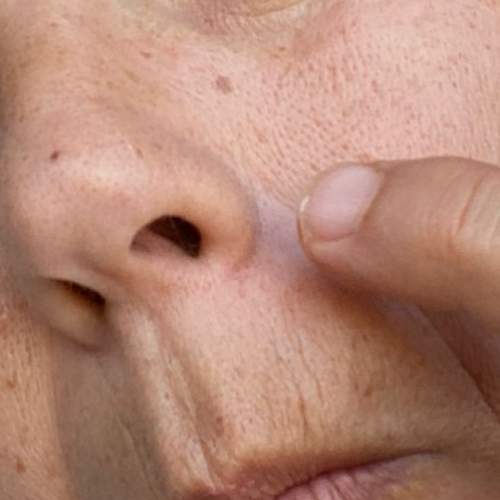
Let’s cut to the chase: vitamin E earns its place on the list because it works. It’s not trendy.
It’s proven.
So, yes, there’s a reason vitamin E keeps showing up in natural skincare conversations.
Because it works.
And not in a dramatic, overnight-miracle kind of way. It works quietly, consistently, and with long-term benefits your skin will thank you for.
Here’s what it’ll do for your skin IF YOU ARE CONSISTENT.
1. It will help protect your skin
Every day, your skin deals with stress — from sunlight, air pollution, weather, even your phone screen. Vitamin E helps reduce the damage that stress causes by neutralising free radicals (those unstable little molecules that speed up ageing, as I explained in the intro of this article).
2. It will support your skin barrier
Your skin has a natural barrier that keeps the good stuff in (like moisture) and the bad stuff out (like irritants). Vitamin E helps strengthen that barrier, making your skin feel softer, less dry, and more resilient.
3. It’s naturally soothing
If your skin often feels irritated, inflamed, or a bit too reactive, vitamin E can help calm things down. It’s gentle enough for sensitive skin and can take the edge off redness and dryness.
4. It brightens dull skin over time
No harsh peels or exfoliants here. Just gradual softening of uneven tone and a more even, rested look — especially when used regularly. I particularly lOVE this.
5. It pairs beautifully with other ingredients
Vitamin E doesn’t need to do all the work alone. It works even better alongside ingredients like rosehip oil (for regeneration), aloe vera (for hydration), or vitamin C (for glow and collagen support). Check out my aloe vera gel together with vitamin E, a POTENT COMBO!!
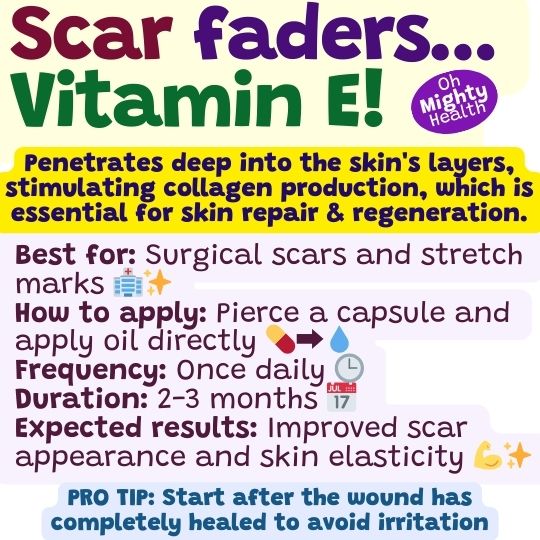
Who should be using it?
Here’s who it tends to work best for:
You might benefit from vitamin E if:
- Your skin feels dry, flaky or tight, especially after cleansing
- You’ve noticed dullness, uneven tone or that “tired” look
- You spend a lot of time in the sun, wind, or cold weather
- You have sensitive skin that reacts easily to harsh products
- Your skin is starting to show fine lines, rough patches or general fatigue
- You’ve recently had a lot of stress or illness, and your skin shows it
It’s not about needing a “perfect” skin type — it’s about giving your skin gentle, nourishing support.
And that’s where vitamin E really shines, trust me.
If already convinced, here’s the VITAMIN E I recommend. If not, please keep reading.
But what if your skin is oily or acne-prone?
Good question. Vitamin E is a heavier oil, and in its pure form, it can be too rich for some skin types — especially if you’re prone to breakouts or congestion.
What you can do instead:
- Use a product that contains vitamin E, rather than the pure oil (here’s my article on a GREAT natural product that uses vitamin E as part of its ingredient list)
- Look for it near the middle or end of the ingredients list
- Patch test first, especially if your skin reacts easily to new products
For those with oily or acne-prone skin, the JĀSÖN Vitamin E 45,000 IU Oil is a great ready-made option. It’s already blended for easier use and still delivers all the skin-loving benefits.
Everyone’s skin is different. It’s not about following trends — it’s about learning what your skin likes, and adjusting from there.
Before you start: a few quick tips
Even though vitamin E is gentle for most, a little caution goes a long way. Before you dive in:
- Always patch test – Apply a small amount behind your ear or on your jawline and wait 24 hours. It’s rare, but some people can react to vitamin E, especially in concentrated form.
- Check the ingredients list – If you’re buying a product with vitamin E, look for tocopherol or tocopheryl acetate. You don’t need it listed near the top — even small amounts can be effective.
- Avoid expired oils – If you’re using a pure vitamin E oil or a DIY blend, make sure the oils are fresh. Rancid oils can irritate your skin and won’t offer the benefits you’re after.
- Keep it cool and dark – Store oils in a cool, dark place to help them stay stable longer.
How to use vitamin E for face care (without overdoing it)
This is where it often goes wrong: someone hears vitamin E is good for skin and starts slathering on the thick stuff straight from the capsule — then wonders why their face feels greasy, clogged, or irritated.
Let’s avoid that.
Here are three easy, reliable ways to use vitamin E on your face — without overdoing it:
1. Add a couple of drops to your moisturiser
This is my favourite method. Simple and VERY effective if you’re consistent.
Get the vitamin E I recommend here, then add 1–2 drops of vitamin E oil to your regular moisturiser and mix it in your palm before applying. That’s all you need.
Apply it to slightly damp skin — this helps it sink in better and feel less heavy.
2. Make a simple DIY facial oil
Prefer to blend your own? Here’s a lovely, gentle recipe to start with:
- 10ml cold-pressed rosehip oil or sunflower oil
- 2 drops vitamin E oil
- Optional: 1 drop lavender or chamomile essential oil (for added calm)
Mix it gently in a dark glass bottle and use 2–3 drops at night, right after cleansing. Always apply to damp skin, not dry.
3. Use a product that already contains vitamin E
This is an option if you prefer to use a product that ALREADY contains vitamin E.
You’ll find vitamin E in:
- Nourishing facial oils
- Creamy moisturisers
- Night serums
It’s often listed as tocopherol or tocopheryl acetate. Don’t worry if it’s not at the top of the ingredients list — it works well in small amounts.
If you want to go for this option, I recommend the JĀSÖN Vitamin E 45,000 IU Oil. It’s already blended for easier use and still delivers all the skin-loving benefits of vitamin E. Here’s the article I wrote on it.
A little goes a long way…
This isn’t one of those ingredients where “more” = “better.”
You’re not meant to coat your face in a thick layer. Just a few drops, properly applied, is enough to make a difference — and keep your skin feeling like skin, not a sticky mess.
When to use it — and when it starts working
Let’s be honest — vitamin E isn’t an overnight miracle worker.
I’ve already told you that and you must be consistent and patient. But IT WILL WORK.
And, when you use it right and give it time, the results are worth it. Think smoother texture, fewer dry patches, and a healthier, more even glow that builds over time.
Here’s how to work it into your routine:
Use it at night
This is when your skin naturally goes into repair mode. Applying vitamin E in the evening gives it the best chance to work deeply without battling sun exposure, makeup, or pollution.
If you’re using it as part of a blend or with moisturiser:
- Apply 3–5 times per week, depending on your skin type
- Dry or mature skin? You can probably use it daily
- Oily or sensitive skin? Start with twice a week and adjust
Here’s my recommended pure vitamin E oil — and if you prefer something already blended (less thick, a bit gentler), the JĀSÖN Vitamin E 45,000 IU Oil is a great pick.
When will you see results?
What most people notice first:
- Softer skin in about 7 to 10 days
- Hydration levels improve within a week or two
- Tone and brightness? Usually more visible after 3 to 4 weeks
- Redness and sensitivity? That depends on your triggers, but many report calmer skin within a few uses
It’s slow skincare — but steady.
And once you find your sweet spot, you won’t want to stop.
Get the most out of it
Vitamin E works beautifully — but how you use it can make or break the experience.
It’s not complicated, but it does help to keep a few things in mind.
1. Always apply it to damp skin
Always. Vitamin E sinks in much better when your skin is slightly damp — not dripping wet, just freshly cleansed and still a little dewy. This helps it absorb rather than sit on top.
2. Use less than you think you need
This is one of those ingredients where a tiny amount really is enough. If your skin feels greasy or heavy afterwards, you’ve used too much.
3. Pair it with a light hydrator
Try layering it over something like aloe vera gel, a floral water, or a light hyaluronic acid serum. Vitamin E seals it all in, keeping your skin soft and nourished. Again, I recommend you read my article aloe vera gel together with vitamin E.
4. Skip the active acne
If you’ve got inflamed breakouts, pure vitamin E might be too rich — especially if your skin’s already sensitive. Stick to products that include vitamin E in smaller amounts instead.
5. Keep your routine simple!!
You don’t need to layer five different oils and serums. Let vitamin E do its job without competing for attention. One or two well-chosen products are often more effective than a complicated lineup.
Here’s my recommended pure vitamin E oil — and if you prefer something already blended (less thick, a bit gentler), the JĀSÖN Vitamin E 45,000 IU Oil is a great pick.
Common mistakes to avoid when using vitamin E on your face
Even though vitamin E is gentle and natural, it’s easy to go wrong if you’re not careful. Here’s what to watch out for:
1. Using too much
This is the most common issue. Vitamin E is thick and rich — a couple of drops is enough. Slathering it on can leave your skin sticky, clogged, or uncomfortable.
2. Applying it to dry skin
It works best when applied to damp skin. If your skin is bone dry, it won’t absorb properly and may feel greasy instead of nourishing.
3. Using it on active breakouts
Vitamin E isn’t a spot treatment, and it can sometimes make breakouts feel worse — especially in its pure form. If your skin is flaring up, keep things light and gentle.
4. Mixing it with everything
Vitamin E works well with many ingredients, but it doesn’t need to be mixed with everything in your cabinet. Keep it simple — no need to turn your face into a test lab.
5. Expecting instant results
You won’t wake up glowing after one use. This is a slow-build ingredient. The glow comes with consistency, not speed.
Blends well with these natural favourites
One of the best things about vitamin E is that it plays nicely with others. It’s not one of those fussy ingredients that clashes with everything.
In fact, a well-paired combo can give your skin even better results — without making your routine more complicated.
Here are some natural ingredients that work beautifully with vitamin E:
1. Aloe vera
Perfect for adding a burst of hydration. Use aloe underneath your vitamin E product, especially if your skin feels hot, red, or dry. It creates a soothing, water-based layer that vitamin E can help seal in. I TOTALLY LOVE THIS MIX. Again, check my article here aloe vera gel together with vitamin E.
2. Rosehip oil
A rich, regenerating oil that complements vitamin E perfectly. Rosehip is high in natural vitamin A, which can support cell turnover and help fade dark spots. Together, they make a lovely blend for evening tone and softening scars. You can mix aloe vera gel, rosehip oil and a few drops of vitamin E. Beautiful!
3. Jojoba oil
Technically a wax, but it feels like a lightweight oil and mimics your skin’s natural sebum. Great if you want to dilute vitamin E slightly and still get a smooth, non-greasy finish.
A tip on blending…
Don’t go overboard. Pick one or two of these to combine with vitamin E — and keep your skin’s needs in mind. Some nights your skin just wants moisture. Other nights, it might crave repair.
Here’s my recommended pure vitamin E oil — and if you prefer something already blended (less thick, a bit gentler), the JĀSÖN Vitamin E 45,000 IU Oil is a great pick.
Final thoughts
Vitamin E isn’t new. It’s not a trend. It doesn’t promise miracles in a jar. But if what you want is skin that feels calm, nourished, and just a bit more like you again, it’s a beautiful place to start.
It’s one of those ingredients that works in the background — softening rough patches, supporting your skin’s natural barrier, bringing back a healthy, rested glow over time. No drama. No huge price tag. Just slow, steady, gentle results.
If your skincare routine has become complicated, overwhelming, or just… not giving back what you hoped — vitamin E might be exactly what your skin’s been asking for.
Simple. Proven. Kind to your skin.
Try it, and give it a little time. You might be surprised by how much difference just a few drops can make.
Patri xx
FAQs
Can I use vitamin E on my face every day?
Yes, if your skin tolerates it well. Start a few times a week and build up. If it ever feels too rich, back off or switch to every other night.
Is it safe around the eyes?
In tiny amounts, yes — but be cautious. Use a very small amount and avoid getting too close to the lash line. A product formulated for the eye area is safer than using pure oil.
Can I mix it with my vitamin C serum?
Yes, they actually work very well together. Vitamin E helps stabilise vitamin C and makes its antioxidant effects even more powerful. Just make sure your skin tolerates both.
What if I’m allergic to nuts?
Some vitamin E oils are derived from nuts. Always check the source or choose one that’s labelled as nut-free.
Scientific resources
1. Keen MA, Hassan I. Vitamin E in dermatology. Indian Dermatol Online J [Internet]. 2016 [cited 2025 May 11]; 7(4):311–5. Available from: https://www.ncbi.nlm.nih.gov/pmc/articles/PMC4976416/.
2. Liu X, Yang G, Luo M, Lan Q, Shi X, Deng H, et al. Serum vitamin E levels and chronic inflammatory skin diseases: A systematic review and meta-analysis. PLoS One [Internet]. 2021 [cited 2025 May 11]; 16(12):e0261259. Available from: https://www.ncbi.nlm.nih.gov/pmc/articles/PMC8670689/.
3. Santos JS, Tavares GD, Barradas TN. Vitamin E and Derivatives in Skin Health Promotion. In: Vitamin E in Health and Disease – Interactions, Diseases and Health Aspects [Internet]. IntechOpen; 2021 [cited 2025 May 11]. Available from: https://www.intechopen.com/chapters/78135.
4. Thiele JJ, Ekanayake-Mudiyanselage S. Vitamin E in human skin: Organ-specific physiology and considerations for its use in dermatology. Molecular Aspects of Medicine [Internet]. 2007 [cited 2025 May 11]; 28(5):646–67. Available from: https://www.sciencedirect.com/science/article/pii/S009829970700057X.
5. Abadie MA, Mahfoudh M, Al-Rawi A-H. Systemic Vitamin E in Modern Skin Therapy: A Comprehensive Review. European Journal of Clinical Medicine [Internet]. 2025 [cited 2025 May 11]; 6(1):1–6. Available from: https://www.ej-clinicmed.org/index.php/clinicmed/article/view/354.

